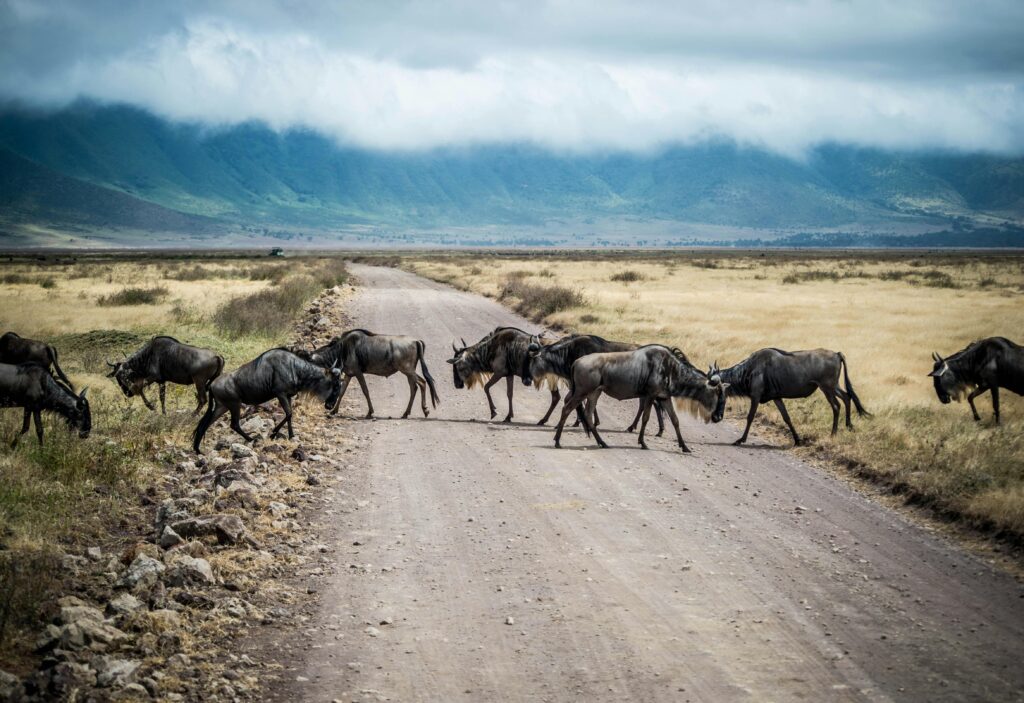East & South Africa

Wildlife Crossing
East and South Africa are two of the most iconic regions for wildlife travel, photography, and unforgettable encounters with nature. Together, they offer some of the world’s richest biodiversity and most dramatic landscapes — from endless savannas to lush wetlands, rugged coastlines to misty mountains.
Why East Africa?
East Africa is the land of great migrations, ancient valleys, and volcanic highlands. It’s where endless herds move across golden plains, chased by lions and watched over by towering giraffes. It’s also home to two of the most famous safari destinations in the world: Kenya and Tanzania.
Top Highlights in East Africa:
Photography Tips for East Africa:
Why South Africa?
South Africa offers a different kind of wild beauty: dramatic coastlines, epic mountain ranges, and private reserves where conservation success stories shine. It’s also one of the easiest countries for first-time safaris thanks to excellent infrastructure, malaria-free zones, and world-famous parks.
Top Highlights in South Africa:
Photography Tips for South Africa:
Quick Tips for Traveling in East & South Africa:
Every sunrise over the savanna, every distant roar, every moment spent watching wild animals live their stories — it all begins in places like East and South Africa. Here, the wild isn’t just something you see — it’s something you feel. And it’s something worth protecting for generations to come.
Why East Africa?
East Africa is the land of great migrations, ancient valleys, and volcanic highlands. It’s where endless herds move across golden plains, chased by lions and watched over by towering giraffes. It’s also home to two of the most famous safari destinations in the world: Kenya and Tanzania.
Top Highlights in East Africa:
- Serengeti National Park (Tanzania): Witness the Great Migration, where millions of wildebeest and zebras move in a timeless cycle of life and survival.
- Masai Mara National Reserve (Kenya): Incredible predator action, river crossings, and one of the best places to photograph lions.
- Ngorongoro Crater (Tanzania): A natural wildlife amphitheater with dense populations of big animals including rare black rhinos.
- Amboseli National Park (Kenya): Breathtaking views of Mount Kilimanjaro with elephants walking in the foreground — a dream for photographers.
Photography Tips for East Africa:
- Golden hours: Sunrise and sunset offer the most magical light — soft, warm, and ideal for capturing dramatic wildlife silhouettes.
- Migration timing: July to October is peak Great Migration season — plan early to secure the best lodges and guiding services.
- Gear tips: Bring a long lens (300mm or more) for close-ups without disturbing the animals. Always pack extra batteries and dust protection for your gear.
- Ethical photography: Avoid blocking animal paths or getting too close. Always respect the guide’s distance advice.
Why South Africa?
South Africa offers a different kind of wild beauty: dramatic coastlines, epic mountain ranges, and private reserves where conservation success stories shine. It’s also one of the easiest countries for first-time safaris thanks to excellent infrastructure, malaria-free zones, and world-famous parks.
Top Highlights in South Africa:
- Kruger National Park: One of Africa’s largest and most diverse parks, home to the Big Five and accessible self-drive safaris.
- Greater Kruger Private Reserves: Luxury lodges with off-road driving allowed for closer wildlife sightings.
- Garden Route: Coastal forests, lagoons, and the chance to spot whales and dolphins from scenic viewpoints.
- Drakensberg Mountains: Spectacular landscapes and rare species like bearded vultures in the soaring cliffs.
Photography Tips for South Africa:
- Self-drive safaris: In Kruger, you control the pace — early mornings and late afternoons offer the best light and animal activity.
- Different habitats: Capture both close-up wildlife portraits and sweeping landscapes — bring wide-angle and telephoto lenses if possible.
- Be patient: Waiting quietly often rewards you with rare behaviors — a leopard climbing a tree, a herd crossing a river, or a lion roaring at dusk.
Quick Tips for Traveling in East & South Africa:
- Book safaris at least 6 months in advance during peak seasons (July-October and December-January).
- Always follow park rules: no loud noises, no feeding animals, stay inside vehicles unless in designated areas.
- Travel insurance is highly recommended, including coverage for medical evacuation if visiting remote areas.
- Bring neutral-colored clothing (khaki, green, brown) to blend into the environment better and avoid attracting insects.
- Respect local communities — many safaris take place near villages where traditions and conservation efforts are closely linked.
Every sunrise over the savanna, every distant roar, every moment spent watching wild animals live their stories — it all begins in places like East and South Africa. Here, the wild isn’t just something you see — it’s something you feel. And it’s something worth protecting for generations to come.
